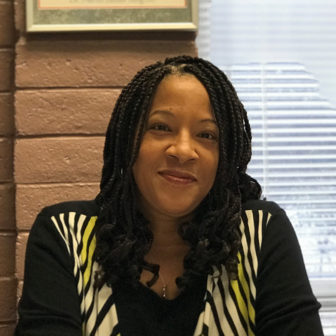On a cloudy September afternoon in Santa Cruz, California, I am standing in the probation complex parking lot talking on the phone with Chief Probation Officer Fernando Giraldo. Out of the corner of my eye I catch a glimpse of a figure breaking into a run toward where I am standing. Being the chick that I am, I take a two-second survey of the area and determine that I am the intended target …
 I had the pleasure of attending the JDAI (Juvenile Detention Alternatives Initiative) coordinators convening in Baltimore in October and, with Carol Matsuoka, sharing some results-based leadership tools. JDAI coordinators are truly an inspired group of change agents seeking to connect, get more resources and achieve equity for youth of color and well-being for all youth, families and communities.
I had the pleasure of attending the JDAI (Juvenile Detention Alternatives Initiative) coordinators convening in Baltimore in October and, with Carol Matsuoka, sharing some results-based leadership tools. JDAI coordinators are truly an inspired group of change agents seeking to connect, get more resources and achieve equity for youth of color and well-being for all youth, families and communities.
The convening was buoyed by lessons and tools to advance REEI (racial ethnic equity and inclusion) work offered by Ana Wong and Carolina Almarante-Terrero from the Burns Institute. Coordinators were able to see themselves as change agents as a result of the networking, learning and opportunities to share ideas and experiences.
The group was asked to share success stories and ideas of what is working well in their sites. Many shared system reforms of case processing, community engagement, inclusion of youth and family voice, policy changes, etc. During the affinity groups, the coordinators learned from and enriched each other. It was moving to hear about the great strategies and results at many levels of our reform work.
Another second allows me to determine that a youngster with a huge smile is headed my way and I need to brace for the outstretched arms that are reaching for me …
Before: Influenced by negative peers
The young man who broke into a run across the parking lot on a cloudy day and lit it brightly with the pure joy in his smile represents the result of equity and wellbeing we are working toward. The young man I will call “Juan” just six months ago presented before our court heavily gang-affiliated, angry, depressed and with very concerning aggressive behaviors.
A common response would have been to send him away and remove the threat to community safety. But this wasn’t the response in Santa Cruz. Instead, the collective efforts of probation, the court, court partners and community partners chose to take the opportunity to keep Juan at home in his community.
Juan and his family agreed to and were referred to a home-based trauma-focused therapeutic program aimed at stabilizing youth in their homes and communities, therefore preventing out-of-home placements. More importantly, this newly developed program was a result of many intersections of our system informing what this program should be. It was informed by feedback from parents and youth in focus groups and surveys, by the courts’ request for better options and by our data telling us where we needed to focus our attention to reduce disparities with our Latino youth population in out-of-home placements.
At-home new program
This program, FUERTE (Families United in Respect, Tranquility and Hope), is staffed by a bilingual, bicultural team comprised of a licensed mental health clinician, a transitional specialist and a probation officer. Together they deliver services and support to youth and families in their homes and communities, meeting their needs after hours, on weekends and with 24-hour crisis response. Appointments are held in the homes of the youth and families at times that work for them.
At present we have achieved a 33 percent reduction in out-of-home placements and have recently replicated the model with our child welfare partners (absent probation). Yet, there is always more progress to be made.
After embracing the outstretched arms reaching for me, I received an awesome hug and experienced the sheer pride and joy that Juan chose to share with me. He exulted how happy he was that he is about to be released from probation, how hard he worked to “do good” and that he remembered our team saying during his team staffing “You can do this.” His smile was contagious, as was his joy.
I could not have felt more honored to have been a partner in the collective efforts of the internal and external system partnerships that could break down barriers, address equity in the delivery of services and serve to keep “our kids” at home where they are valued as future contributors to our communities.
One of my best days
Juan and his success represent the result we should all be working for, no matter where in the system continuum we impact change. The work is not easy, the challenges are numerous and the journey is long. An unexpected hug and smile will fuel my efforts in the days and years to come.
We won’t all get to experience this type of result at such a personal level and so I share this in hope that you can vicariously experience what I did on what turned out to be one of the absolute best days of my career. By no means do I rest on the laurels of my encounter with Juan, instead I am conscious of how much more work there is to be done and of how I must contribute. This commitment to action is much easier knowing that I am a part of a collective of leaders, change agents and reformers across the country who share this work and journey.
The results statement for the JDAI coordinators convening was:
JDAI coordinators will move stakeholders together toward equity for youth of color and achieve outcomes of well-being for all youth, families, and communities.
I believe this is a call to action and results that we are all working to achieve!
Valerie Thompson is the assistant chief probation officer for the Santa Cruz County Probation Department and is responsible for the oversight of the Juvenile Division, Juvenile Hall, Personnel and budget. She applies her 30 years of experience in probation to ensure equitable, culturally responsive and inclusive probation practices that are data driven, rooted in research and collaboration.
This post originally appeared on JDAIconnect.org.

Great Probation story, Valerie! There are many more to be told.